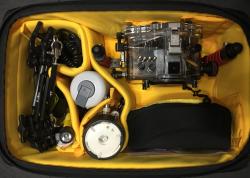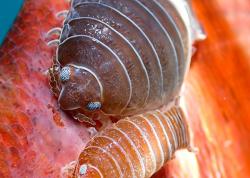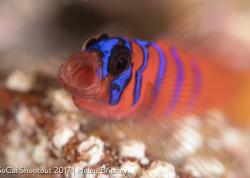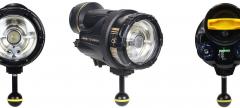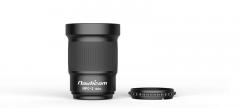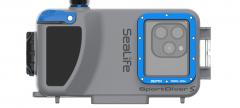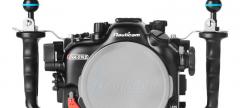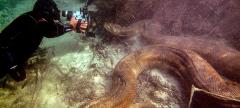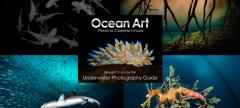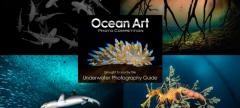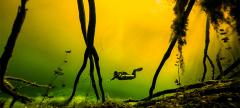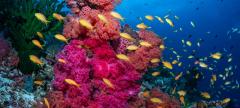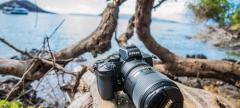Story Behind the Shot: Lion-mane Nudibranch
Story Behind the Shot: Melibe Leonina Nudibranchs
An Inside Look at Shooting a Unique Nudibranch Congregation
Story and Photography by Brent Durand

Melibe leonina are fascinating nudibranchs and sought-after by many underwater photographers. Often called “lion’s mane” or “hooded” nudibranchs, they’re frequently spotted in large congregations called bouquets.
Melibes feed by opening their massive tentacle-lined oral hoods in order to capture small prey drifting through the water. I’ve noticed that many of them feed in rhythm with kelp blades swaying in the surge, creating a beautiful display as hundreds of hoods open and close with the rhythm of the sea.

Locating the Melibes
All credit in locating our “stash” of Melibes goes to my dive buddy, who spotted them at the very end of long beach dive in Malibu. Hundreds of the nudibranchs covered several kelp fronds up and down the water column. We both descended to shoot but with nearly empty tanks we made a vow to come back asap. With a 45-minute kick to the reef and 53 degree water it’s a dive(s) that take some planning and a lot of time to execute. Before leaving, we made sure to carefully remember where this particular kelp was located.

Photo Shoot 1: Wide-Angle
I shoot with a Canon 5D mk3 in an Ikelite housing and opted to use the Tokina 10-17 wide angle lens for the first Melibe photo shoot, two days after our discovery. My target images were a wide shot of several nudibranchs on a kelp blade with ambient water color as well as a diver looking at the Melibes (we had two more dive buddies join for this dive). Visibility was about 5-10 feet in this area and the sky was hidden by a milky marine layer. The swaying kelp, moving Melibes and their flaring oral hoods created a dynamic scene, but made it very difficult to compose a photo. Every time I found a great composition and brough my eye to the viewfinder the scene would shift slightly. Luckily, I was able to capture the below image and a few others on our 90-minute dive.

Photo Shoot 2: Macro
My next window to dive came three days later, and I decided to bring my Canon 100mm f/2.8 macro lens with a goal to capture detailed Melibe portraits against black water (minimal ambient light).
New Challenges
Several new challenges presented themselves while shooting the Melibes with a macro lens. First, the visibility had deteriorated to a soupy 4-5 feet. Second, the kelp blades were still swaying and the Melibes were still moving, making focusing with a macro lens tough. On top of that, Melibes are transparent, meaning that they blend into the background with little contrast. My 5Dmk3 focuses by detecting contrast and even with a focus light I found the need to focus at a point with high contrast (ie nudi against a kelp blade background instead of the nudi against a water background). The last major challenge was not only finding a Melibe in a nice position, but to find one the right size. The poor vis created the need to be as close as my lens would focus (.03m), and in order to fill the frame the Melibe couldn’t be too large or too small. Oh yea... and you have to anticipate the enormous oral hoods opening and closing. For strobe positioning, I found good results by using one strobe over the subject as a key light with a second strobe as fill light from the side.
Overcoming these challenges, patience and making two dedicated photo dives resulted in the images you see in this article.

Conclusion and Shooting Tips
A Melibe leonina nudibranch congregation is somewhat rare to see, and underwater photographers should jump on the chance to shoot them when the opportunity arises. Wide-angle shooting makes for beautiful images, but should be attempted only when the water color and visibility are ideal. Macro shooting is much more challenging but is worth the effort when you can spend the time to find the right composition with the right camera settings.
About the Author
 Brent Durand is an avid California beach diver, underwater photographer and editor with the Underwater Photography Guide. You can follow UWPG on Facebook, and also read Brent's article on Top 10 tips for fun beach diving.
Brent Durand is an avid California beach diver, underwater photographer and editor with the Underwater Photography Guide. You can follow UWPG on Facebook, and also read Brent's article on Top 10 tips for fun beach diving.
Further Reading
-
Nudibranchs: Facts, Habitat & Photo Tips
-
Story Behind the Shot: Hatching Octopus
-
Octopus Steals Diver's Camera Rig
-
California Sand Dwelling Nudibranchs
Where to Buy
Please support the Underwater Photography Guide by purchasing your underwater photography gear through our sister site, Bluewater Photo & Video. Click, or call them at (310) 633-5052 for expert advice!
RECOMMENDED ARTICLES
SUPPORT THE UNDERWATER PHOTOGRAPHY GUIDE:
The Best Service & Prices on u/w Photo Gear
 Visit Bluewater Photo & Video for all your underwater photography and video gear. Click, or call the team at (310) 633-5052 for expert advice!
Visit Bluewater Photo & Video for all your underwater photography and video gear. Click, or call the team at (310) 633-5052 for expert advice!
The Best Pricing, Service & Expert Advice to Book your Dive Trips
 Bluewater Travel is your full-service scuba travel agency. Let our expert advisers plan and book your next dive vacation. Run by divers, for divers.
Bluewater Travel is your full-service scuba travel agency. Let our expert advisers plan and book your next dive vacation. Run by divers, for divers.





